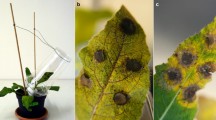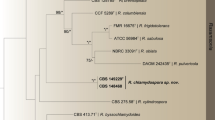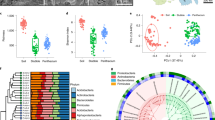Abstract
IN the years preceding 1929, much controversy existed regarding the parasitism of the group of fungi known collectively as Rhizoctonia bataticola. The differences of opinion held by various sections of workers, and postulated principally by Small, Gadd and Briton-Jones, were largely attributable to the use of the one specific name bataticola for what now appears to be a relatively large group of sclerotium-forming fungi. Papers published by Ashby1 in 1927 and Haigh2 in 1930 showed that R. bataticola was a polymorphic fungus possessing a pycnidial stage, Macrophoma phaseoli, and was apparently distinct from two other forms which Haigh styled strain A and strain B. In 1933, I showed3 that strain A was physiologically and morphologically distinct from both strain B and M. phaseoli, and suggested that it should be designated by Small's original binomial R. lamellifera. The question of parasitism I did not touch upon.
This is a preview of subscription content, access via your institution
Access options
Subscribe to this journal
Receive 51 print issues and online access
$199.00 per year
only $3.90 per issue
Buy this article
- Purchase on Springer Link
- Instant access to full article PDF
Prices may be subject to local taxes which are calculated during checkout
Similar content being viewed by others
References
Trans. Brit. Myc. Soc., 12, 141; 1927.
Ann. Roy. Bot. Gard. Peradeniya, 11, 3; 1930.
Proc. Rhodesia Sci. Assoc., 33, 65; 1933.
Author information
Authors and Affiliations
Rights and permissions
About this article
Cite this article
HOPKINS, J. Parasitism of Rhizoctonia lamellifera, Small. Nature 134, 812–813 (1934). https://doi.org/10.1038/134812b0
Issue Date:
DOI: https://doi.org/10.1038/134812b0
Comments
By submitting a comment you agree to abide by our Terms and Community Guidelines. If you find something abusive or that does not comply with our terms or guidelines please flag it as inappropriate.



